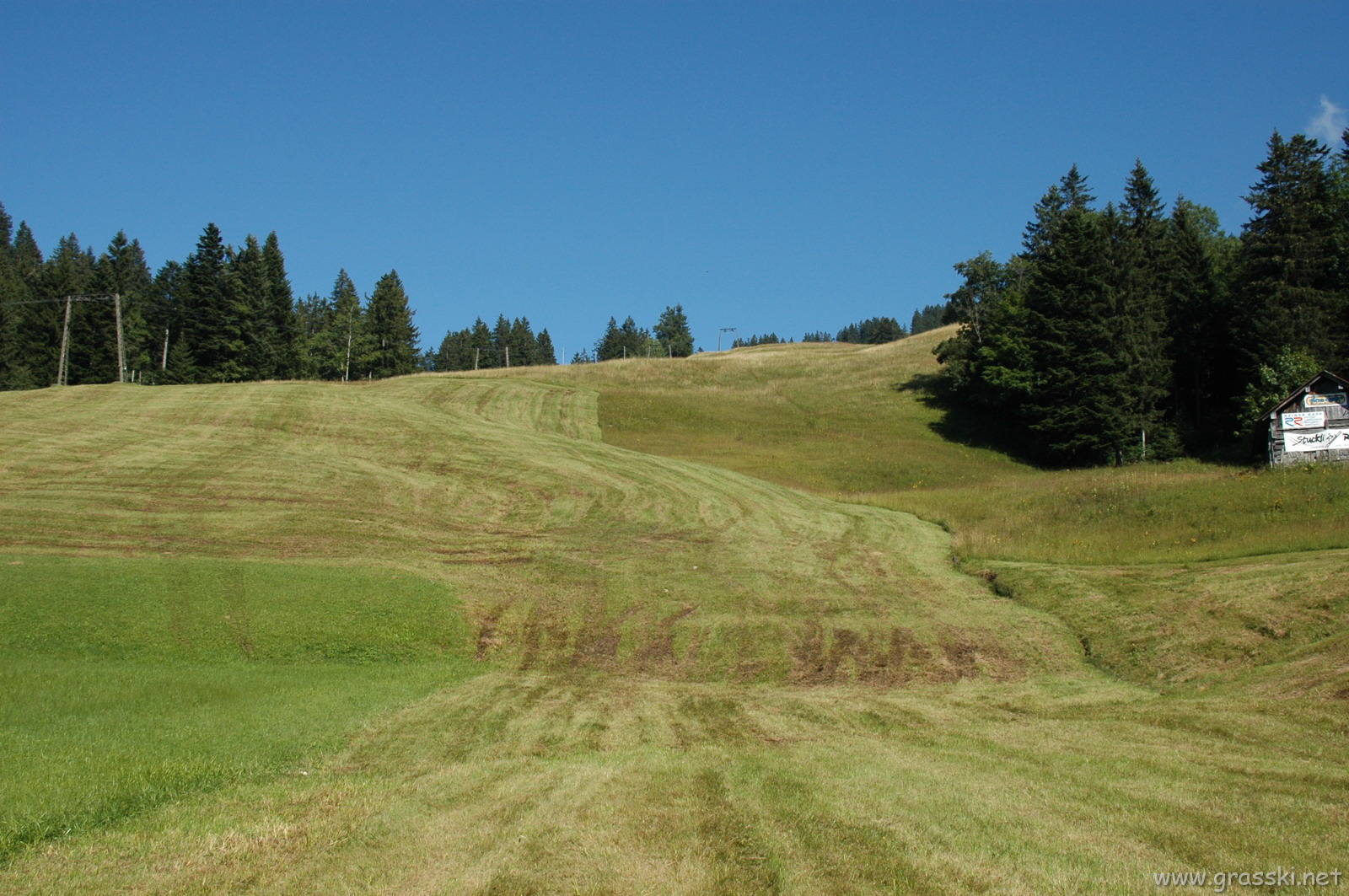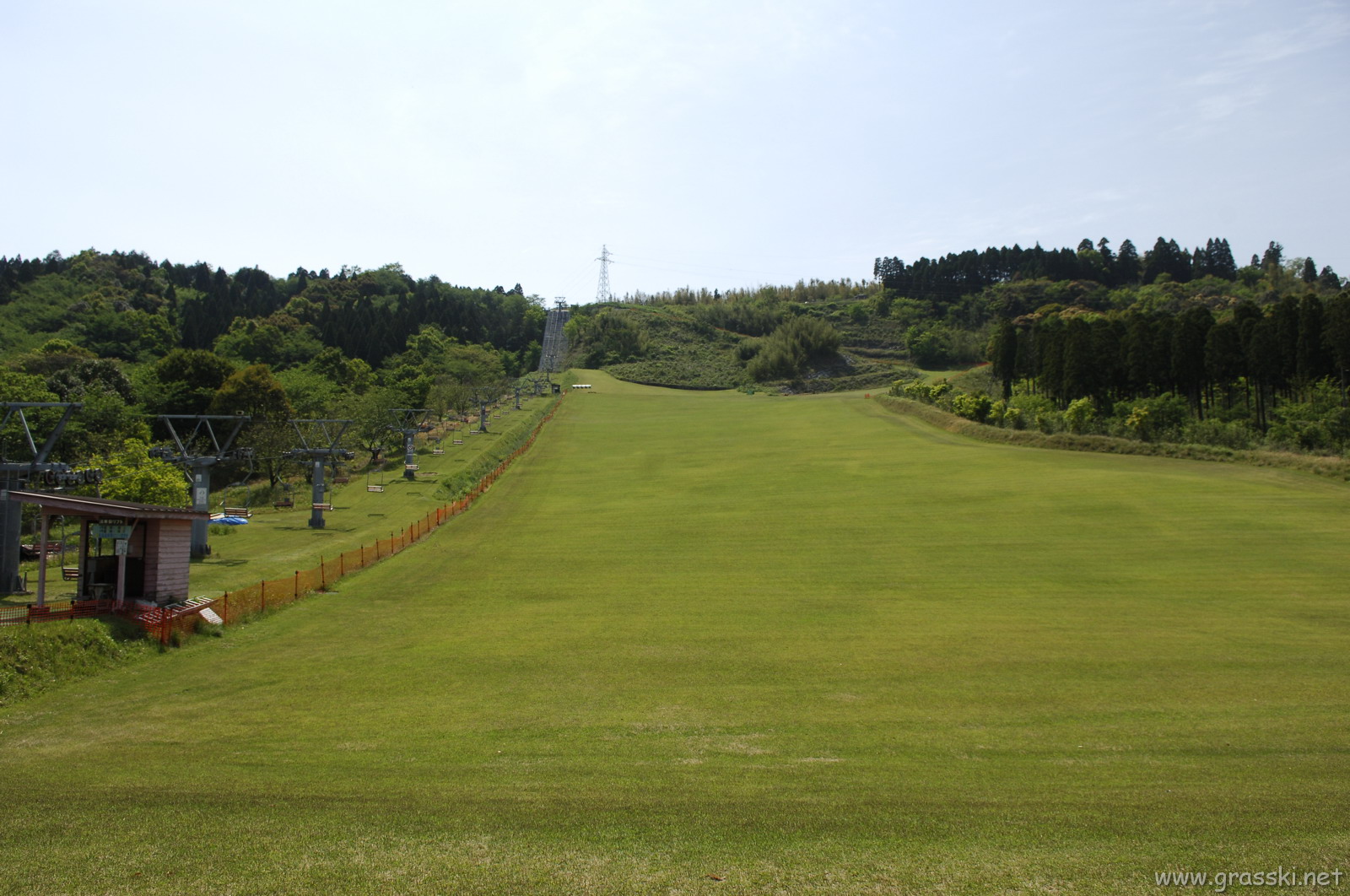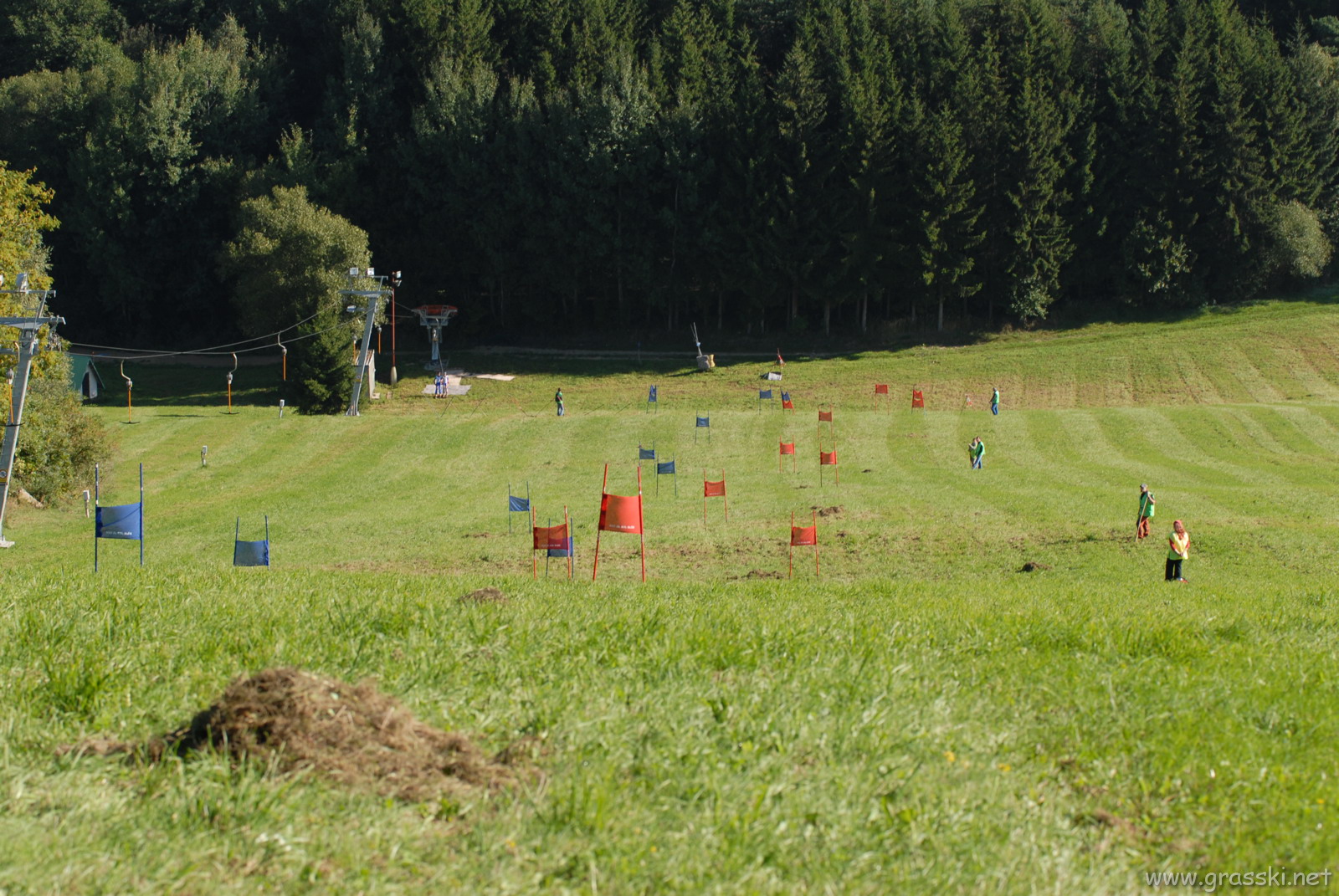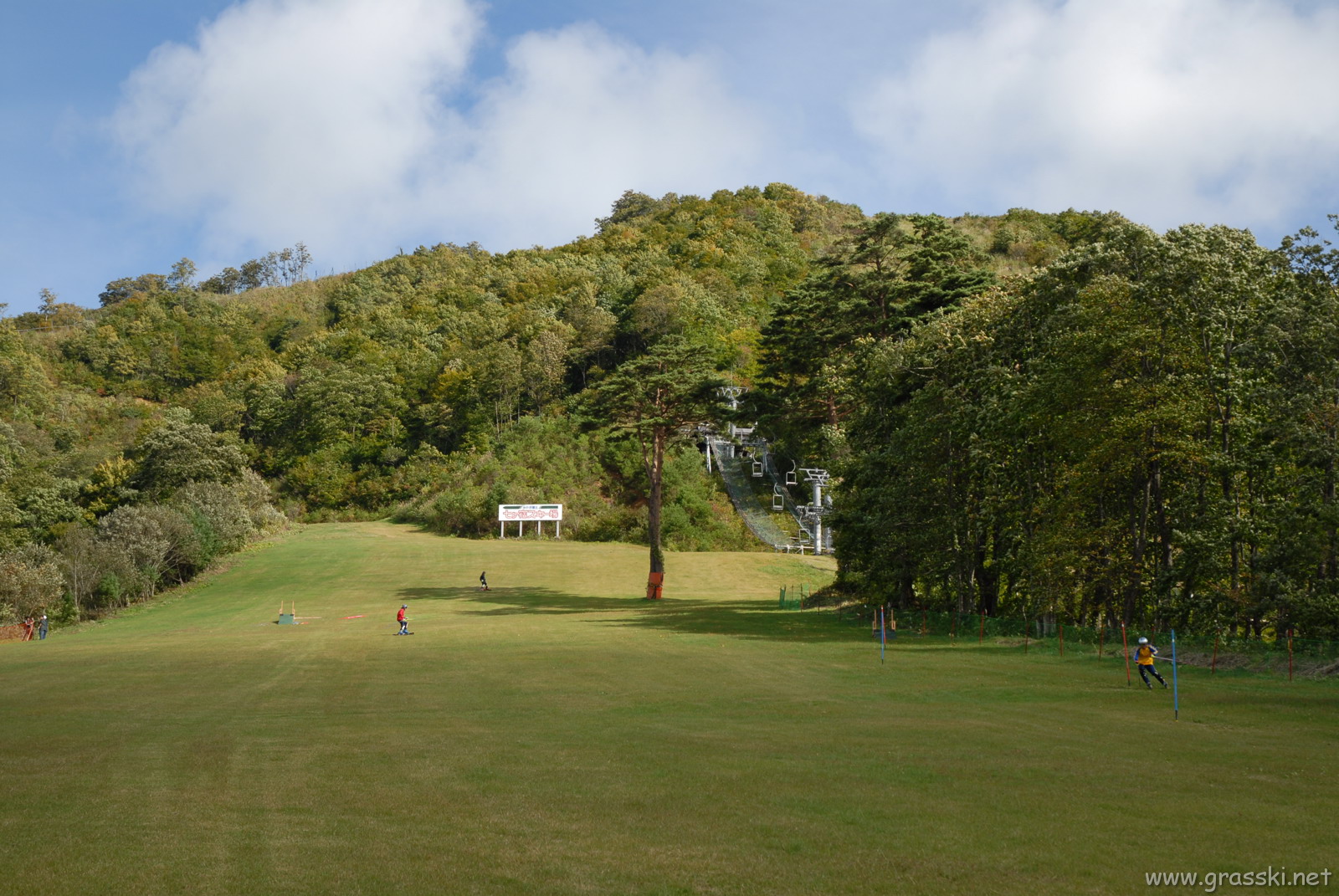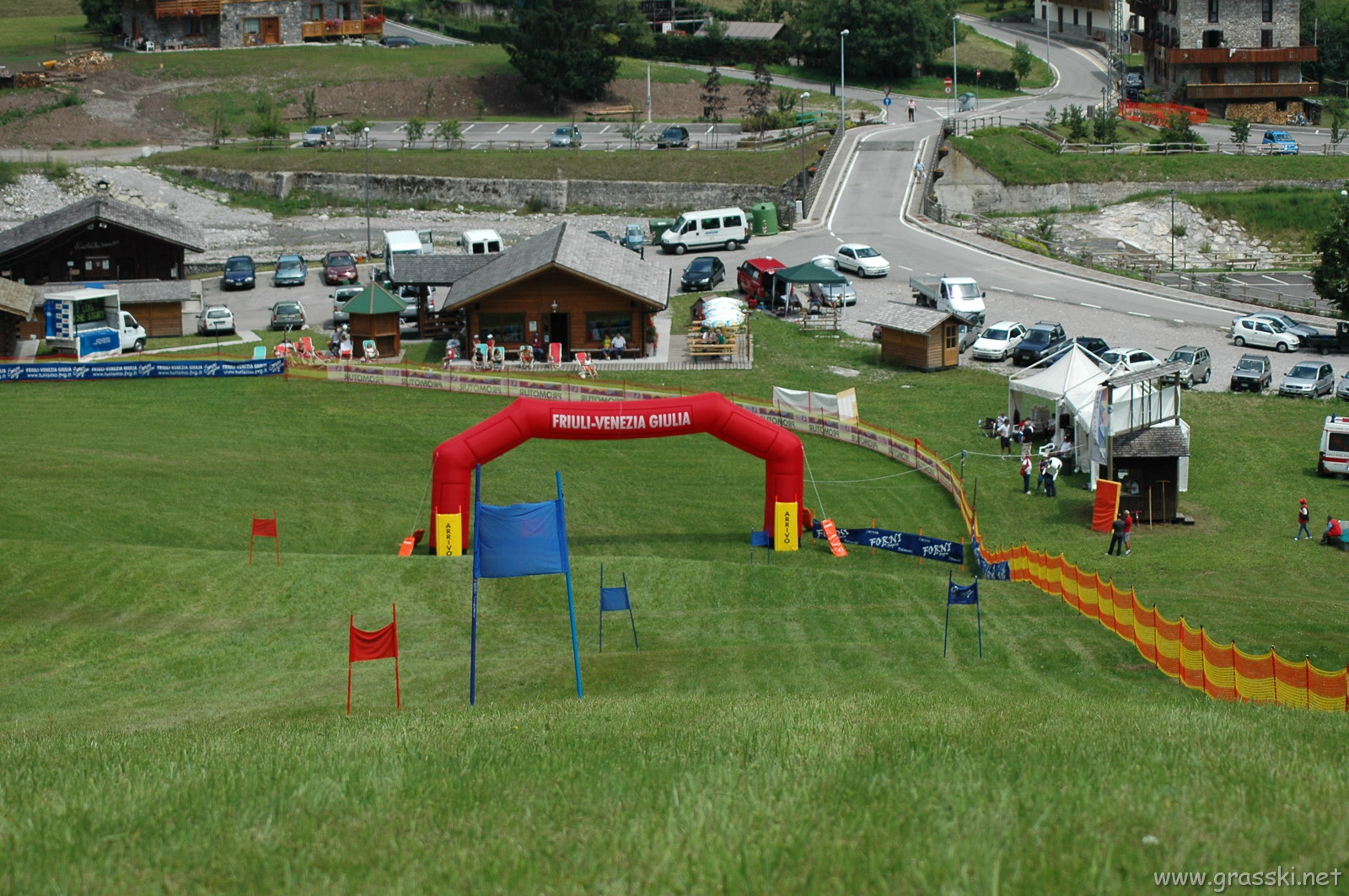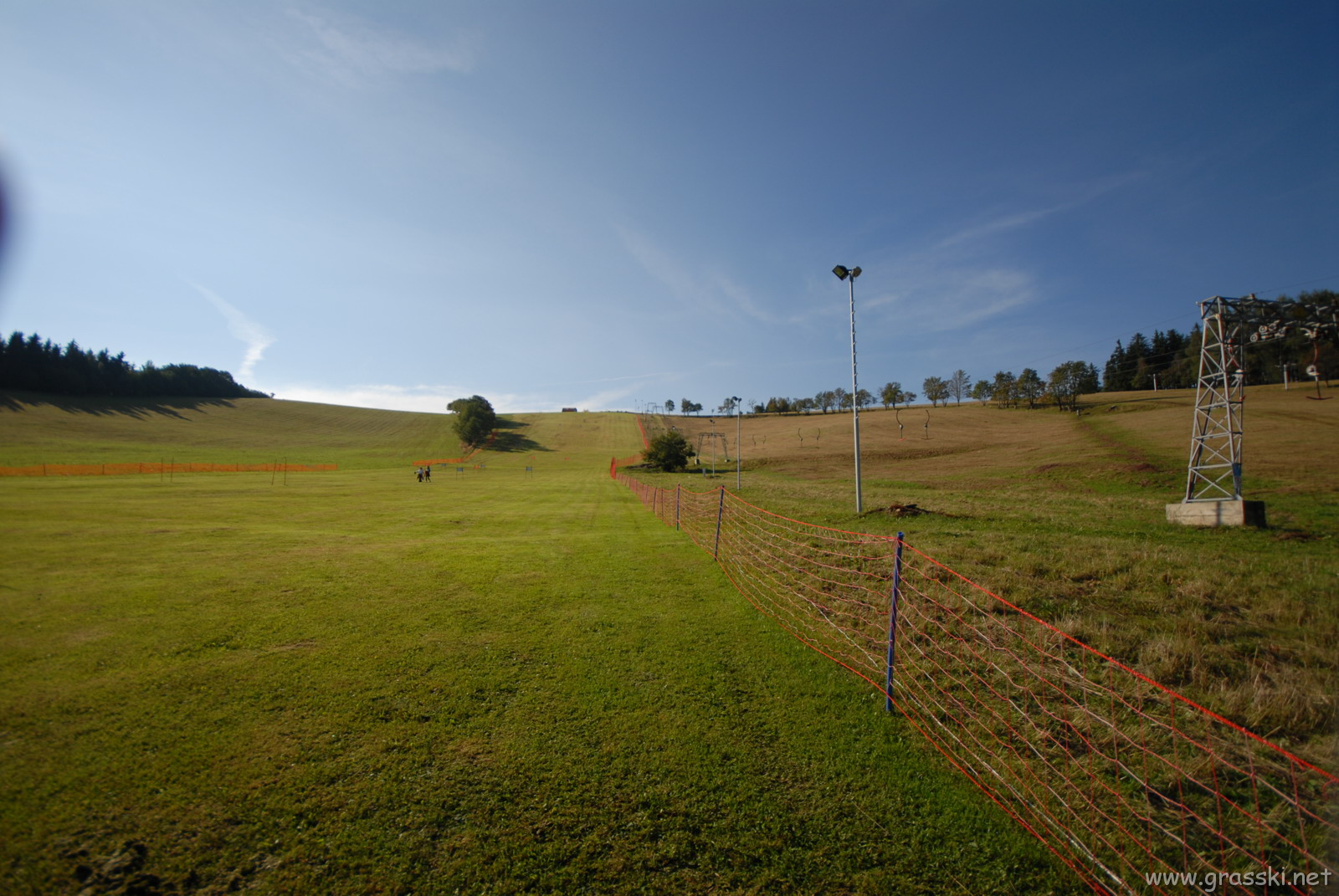Selecting the Ideal Slope and Preparing it for Grass Skiing
Grass skiing tends to be faster than alpine skiing, which means the right slope for this activity should be less steep. Slopes that appear too flat during winter can be perfect for grass skiing. An easy way to picture the ideal slope is by imagining a gently inclined golf course, where ease of learning is prioritized.
If you plan to operate a grass ski rental service, selecting the appropriate slope is crucial. A gentle slope makes for a slower pace, which helps beginners feel comfortable and encourages them to return. Steeper slopes cause skis to move faster and demand greater effort from both beginners and advanced skiers to reach the bottom. Keep in mind that grass skis cannot be slowed down by skidding, so choosing the wrong slope may discourage potential customers.
During a visit to Japan, I witnessed skiing on slopes similar to slightly inclined golf courses, generating interest comparable to alpine skiing at winter resorts. In contrast, some European countries offer challenging slopes primarily aimed at competitors, causing casual sport skiers to lose interest after their first attempts.
Aside from slope inclination, the shape and width of the piste are also essential factors. Since grass skis cannot be stopped by sliding like winter skis, a counter-hill or longer arch is needed for stopping by turning back uphill—requiring more extensive slope width to accommodate this maneuver.
If you own a meadow or plan to ride where grass skis haven't been used before, consider these essential preparations:
- Grass Height and Type: Avoid hard grass or thistles — aim for a height of 5-15 cm. You can also ski on taller grass (which may be slower but makes ski dirtier)
- Slope Surface: Remove medium-sized or large stones, sticks, cones or other obstacles from the slope. Cover any holes or significant irregularities with clay.
- Ideal Surface Maintenance: Each spring, follow these steps for optimal surface conditions:
- Fill larger holes with soil and sow
- Torture the slope until rough (which will help level the surface)
- Sow grass in sparse areas
- Roll for maximum surface evenness
- Grass Management: Regularly mow the grass 2-3 times a year to ensure it remains soft and not too difficult for skiing.
Photos of slopes
Here are few photos comparing nice and easy with difficult slopes where skiing is for more advanced skiers.
